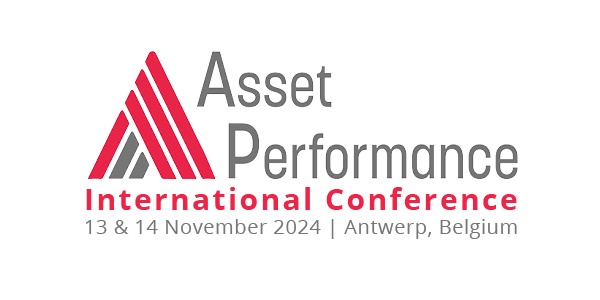Exciting Hackathon Challenge issued by ÆVO
Ever wondered whether predictive maintenance of bridges, locks, and tunnels is possible? And if so, how can it benefit the industry?
Now is your chance to find out.
Dutch civil engineering maintenance and renovation company ÆVO are always looking for ways to detect, and even predict, defects in bridges, locks, and tunnels at the earliest possible opportunity. That’s why they have teamed up with BEMAS to create a Hackathon challenge for the hybrid Asset Performance 4.0 Conference and Exhibition to help them use software and technology to pinpoint small defects and prevent them from growing into large-scale failures. The main focus is to find a predictive maintenance system to detect defects and prevent failures at a very early stage.
This article will explain how the brief for the Hackathon challenge was developed and what you need to do to take part.

Small defects. Big Problems.
A defective camera, ventilator, pump or a loose bulb on a civil engineering structure may not seem like a big issue. But small defects like these can be enough to plunge a city or provincial infrastructure into chaos with road closures and traffic delays.
“The infrastructure we maintain is almost always critical,” says director Corné van Dravik. “In the event of a breakdown, the comfort of road users is often compromised. There are also economic interests at stake, for example when shipping or road transport is hindered. Of course, there can also be safety risks. For example, if a bridge remains open and the barriers no longer work or a situation arises where traffic users become impatient and take dangerous actions to get past the object.”
Rapid response is everything
Modern bridges, locks, and tunnels are dependent on technology.
“A lot of infrastructure today is operated remotely”, explains Corné van Dravik. “Which is an interesting evolution, but there is a downside. With every additional component, the chance of malfunction and defects increase exponentially. Even a dirty lens can be a reason to close a tunnel!”
As service providers, civil engineering maintenance companies need to react very quickly. ÆVO attribute their success to being able to provide a service with engineers on standby 24/7 to carry out urgent corrective interventions. In the case of critical defects, they can usually get to site within one hour to rectify the defect.
Preventive approach pays off
One of the main reasons ÆVO can guarantee such a rapid service is because they limit the need for corrective intervention.
“Thanks to sophisticated preventive maintenance, we can exclude many disastrous results”, says Corné van Dravik. “Admittedly, a lot depends on the owner or manager. It is the Asset Owner who decides whether a component or system is at the end of its lifecycle and needs replacing. If this doesn’t happen, frequent corrective interventions cannot be ruled out. Fortunately, over the years we have built up a relationship of trust with most clients, which means that our preventative maintenance advice is usually followed.”
The benefits of proactivity over reactivity
Although ÆVO scores highly when it comes to preventative maintenance, the service company wants to reduce corrective interventions even further.
“Our ambition is to increase our ability to predict failures in the most crucial infrastructure,” explains Corné van Dravik. “We want to nip even more defects in the bud. The users of bridges, locks and tunnels will certainly appreciate this and we’ll achieve higher levels of customer satisfaction.”
As well as benefiting the asset owner and users, a predictive maintenance approach also benefits the maintenance company themselves. For a start, it eliminates the need for engineers to be constantly on-call to repair faults. The emergency engineering team suffer a disrupted home and social life due to being on semi-permanent stand-by. Additionally, the company can plan their interventions more precisely and optimise their use of manpower and resources, an important factor when you consider the lack of specialist technical professionals available these days.
Combining sensors and control systems
ÆVO is keen to take their predictive maintenance system to new heights by combining IoT sensors on and around the infrastructure with sophisticated control systems. Sometimes, these systems are quite simplistic, such as a sound sensor that records audio from a bridge structure, combined with software to recognise anomalies in the creaks emitted by the bridge materials.
“Experience has taught us that we can discover certain patterns this way. Logically, we can get much more out of the data from the control and monitoring systems of bridges, locks and tunnels” explains Corné van Dravik. Using data in this way can be very beneficial for maintenance companies and asset owners, but it requires watertight security protocols, as infrastructure will always be a potential target for cyber attacks.
Lock as a research object
The growing awareness of predictive maintenance and the necessity of advanced data collection and analysis methods to enable it, has led to the BEMAS Asset Performance 4.0 Hackathon. ÆVO has been given permission by the Port of Rotterdam Authority to analyse log data from one of their locks. “The idea is to link that to other data such as weather conditions, wind strength, number of ships, and water level to highlight patterns that led to past defects and failures.” says Corné van Dravik. “The goal is to encourage developers to come up with a software solution to automate analysis to predict and also indicate what the defect is likely to be. Hopefully, the concept can be applied to multiple locks and even rolled out to bridges and tunnels over the longer term. Only then will we have the state-of-the-art solution of which we dream and with which we can offer our customers maximum added value.”
